#scsg!
Explore tagged Tumblr posts
Note
What ever happened to Sunshine Cheer Squad Go? Is the pitch still ongoing? I remember really liking it when I saw it!
Thank you so much! I really appreciate that people still dig that pitch! It's not, like, totally dead? I'm not actively shopping it around, but I do keep thinking about it. Unfortunately @kianamaiart is too busy absolutely killing it in her day job on Big City Greens for us to keep working on it, but believe me, I'd drop everything in a heartbeat to make it happen if it were possible.
Thank you for asking! I've got some projects in the works that I'm really proud of, but SCSG! still holds a special place in my heart.
#scsg!#sunshine cheer squad go#kiana I hope it's not rude to tag you in this but i thought you should see it
6 notes
·
View notes
Text
scsg twuah. Anywya have silly azure and two time banners I made (credits go to the original artists! :] )

(XD_098777 on X) ⬆️

(d3vi0dhh) on X⬆️

wyorbid on X⬆️

0MNI0XII on X⬆️

kklsmet on X ⬆️
#shitpost#banner design#roblox forsaken#homicidalporkchops#forsaken fanart#forsaken art#two time fanart#two time forsaken#azure forsaken#azuretime#rami#silly!
318 notes
·
View notes
Text
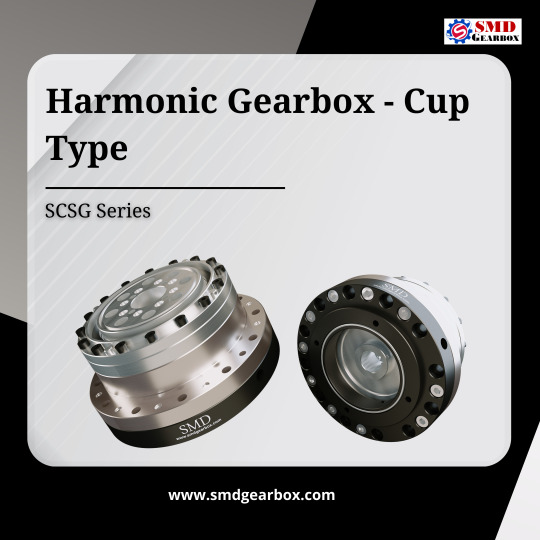
SMD Harmonic Gearbox: SCSG Series - High-Accuracy & Space-Saving Solution
Strain wave gearboxes, also known as harmonic drives, are renowned for their high precision and compact design. They enable smooth motion control with minimal to zero backlash, achieving high reduction ratios in a lightweight package.
Achieve unparalleled motion control with SMD's Harmonic Gearbox
0 notes
Text

🕹🎮🥊 SuperCompleteSelectionGames Street Fighter RYU Hadouken Glove Promotional Movie ストリートファイターリュウ 波動拳グローブ プロモーションムービー
/ 遂に予約開始! \ 対戦格闘ゲーム『ストリートファイター』より 『SuperCompleteSelectionGamesストリートファイター リュウ波動拳グローブ』 予約受付中‼
効果音やSEを多数内蔵‼ また自身のモーションを検知し波動拳を発動🥊
https://p-bandai.jp/item/item-1000195216/
ストリートファイター #SCSG
#StreetFighter #リュウ #波動拳 #昇龍拳
竜巻旋風脚 #真空波動拳 #SF2 #SF5 #カプコン #Capcom
Ryu #SF6 #スト6 #Capcom #StreetFighter6 #SF6 #スト6
StreetFighter #SF #スト#バンダイ #BANDAI
fightinggamecommunity
FGC #fightinggames #fightinggame
格闘ゲーム #格ゲー #jogosdeluta
エクストリームイーストエフジーシー
extremeeastfgc
https://twitter.com/bandai_toys

0 notes
Text
ponderercore . I FORGOT WHERE I LEARNED IT i think it was from scsg when they released. side eyes flopyeslhopy:3
ouhh i wanted to post about this. Whwn im like. At school. Sometimes i get stressed and think about other things that make me stressed (COUGH MEDKIT INCIDENT.) and, for context, my best friend is really like cuddly with me its like a thing we do. And so they noticed i was stressed and tried to hold my hand and mmy bain went SHIT MEDKIT and i punched them. Its ok they didnt mind
11 notes
·
View notes
Text
if i manage to finish this one, scosage shippers are gonna be in for a treat tomorrow <3
#and by a treat i obviously mean angst and pain and suffering obviously#oh i love this already#rubs my evil hands#scosage#i have so many fresh ideas i've never seen in other scsg fics#<- like three ideas
23 notes
·
View notes
Text
DINGHY CRUISING ASSOCIATION AGM 2022
Following the success of our 2021 AGM, our next AGM will also take place online, giving you the chance to take part from the comfort of your own home.
The meeting will take place via Zoom on
Saturday 19th February 2022 at 10am GMT / 4am Central Time
#dca#dinghycruisingassociation#dinghy cruising association#sailboat#double ended sailboat#sailboats#lug sail#smallcraftskillsgroup#scsg
0 notes
Photo

Illustration for @tedlyanderson‘s Sunshine Cheer Squad Go!
1K notes
·
View notes
Note
oo, I immediately want to know more about Aveck, if you're willing to indulge me.
🥹🥺 yes of course
Aveck is a nickname for Navecka, her full name is Cron’avek’caomuo. She is a former student of a prestigious culinary academy on a core world. Her mother worked in political science but her father was a famous chef, and she wanted to be just like him. She learned everything she knows about the culinary arts at her fathers knee.
Tragically, her father was killed by a hit man who was hired by a Very Upset food critic. Aveck sword revenge and quite culinary school to become a mercenary that goes by the title The Bell Chef.
Her main goal was to topple everything that the food critic who had her father killed ever loved, but along the way she takes on other odd jobs such as smuggling and theft, and acquires something of a crew that grew in infamy due to the often baffling way they finish their jobs.
Her mercenary guild goes by the name SCSG, and she meets her guild members over time during various jobs. At this time, there are five other members of the SCSG.
9 notes
·
View notes
Note
hi aunt Cass this is a Smoshcord babey and I just wanna say you’re doing great and you’re so talented keep the good work love ya
thank you!!! good to see ya moving over here too! and we’re all excited for the scsg!
5 notes
·
View notes
Text
A Completely Incomplete History of the Magical Girl Subgenre in Manga and Anime, pt. 2
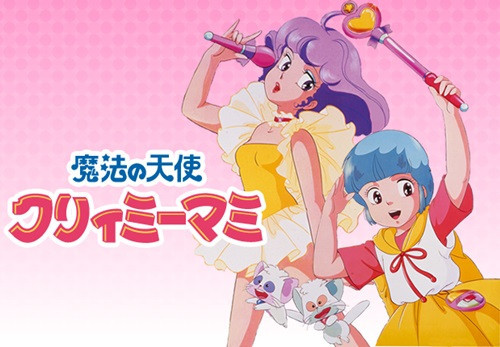
Welcome back to my occasional, completely unscientific, very self-indulgent look at the evolution of the magical girl subgenre! In my first post, I said that the subgenre can be loosely divided into three generations, starting with series like Sally the Witch and Majokko Megu-chan in the ‘60s and ‘70s. In this post, I’ll describe the second generation of magical girls: the new crop of shows starting in the early ‘80s that added some interesting elements that would transform the subgenre. Come join me below the break, gentle readers!
First, a quick recap. When talking about such a specific segment of pop culture, it’s helpful to have a definition to narrow one’s focus and keep things on track. In my first post, I attempted to define the magical girl subgenre as best I could; what I came up with was a series in which the main character(s) are girls, typically teenagers or pre-teens, who have access to magical or otherworldly abilities in what is otherwise a normal, real-world setting, which are used in conjunction with personal strengths and virtues to solve problems and/or achieve their goals, and which they must keep concealed from other people who aren’t in on the secret. Again, it’s not the most scientific definition—it’s a pretty broad net, including some works it probably shouldn’t and excluding a few it should—but it’ll do for this analysis.
Series like Mahoutsukai Sally and Majokko Megu-chan in the ‘60s and ‘70s were popular, running for multiple years and getting translated into other languages and spreading to other markets, but compared to other series they were modest successes. They didn’t have the cultural impact and staying power of other series from Toei around the same time—Cyborg 009 or GeGeGe no Kitaro in the late ‘60s, or Mazinger in the early ‘70s. And while Toei kept periodically making magical girl series—for example, Mahou Shojo Lalabel in 1980—the formula did not substantially change. The second generation of magical girl would come from a different studio, a newer contender in the world of anime: Studio Pierrot.
Toei Animation was (and is) one of the original giants of anime, having been founded in 1948. Studio Pierrot was founded in 1979 by former employees of other studios, and was trying to make a name for itself. It had already hit upon a pretty successful franchise with its adaptation of Urusei Yatsura in 1981, and was starting production on a number of new series. (Urusei Yatsura also sort of fits the “magical girl” definition, and has proved one of Pierrot’s most enduring and beloved properties, but I’d argue that it’s not nearly as important in the history of the subgenre as the series I’m about to describe. Material for a future post, I suppose.)
For one of these new series, Pierrot decided to use the strategy of “media mix,” an idea that’s been around in Japanese pop culture since at least the 1960s but which had only recently acquired a name. To quote Anime’s Media Mix: Franchising Toys and Characters in Japan by Marc Steinberg, media mix is “the development of a text across numerous media, among which anime plays a key role in popularizing the franchise; the dependence on other incarnations to sell works within the same franchise; and the use of the character as a means of connecting these media incarnations.” Basically, the idea is to build a franchise by using characters or ideas across multiple media, something that would reach perhaps its ultimate form in the Pokemon franchise a decade later. In this case, Pierrot would promote the music of a newly-acquired idol singer, Takako Ota, by making her the voice of the main character in a new anime series, Magical Angel Creamy Mami (Mahou no Tenshi Kurimi Mami), which premiered in July of 1983.
The “idol” is a specifically Japanese celebrity type, a young female starlet who generally appears on TV shows, in magazines, and especially in pop music. They’re usually presented and sold on the strength of their cute, pure, “girl next door” image, which means that their image is tightly controlled and heavily managed. It’s sort of the Hollywood idea of the “ingenue,” turned up to eleven and corporate-controlled. Now, if you remember, in my first post I noted that you can trace the development of the first magical girl series directly to the American sitcom Bewitched. These shows were putting their own spin on a fairly simple narrative: a girl with magic powers in a mundane world, dealing with simple problems and the occasional, unthreatening, cartoonish villain. In the same vein, you can trace the development of the second generation of magical girls to the introduction of this new pop-culture figure, the idol.
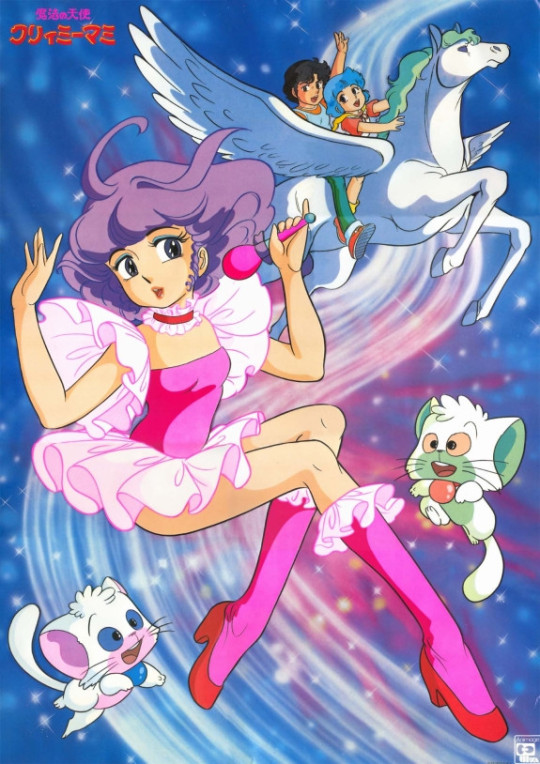
In Magical Angel Creamy Mami, Yu Morisawa is a normal 10-year-old girl, until the day she helps a small alien in his giant, invisible spaceship. For her help, she’s granted a magic wand with a variety of ill-defined powers and two helpers: talking cat-like creatures named Negi and Posi. Yu uses her powers to transform into a glamorous 16-year-old version of herself, who is quickly discovered by a record company and turned into a pop star by the name of Creamy Mami. She must navigate the demands of stardom while also occasionally solving strange magical problems and helping her friends.
I can’t claim to have any special insight into the minds of the show’s creators, but it seems pretty clear to me that Creamy Mami was tailored to fit the image of Takako Ota specifically, and the pop idol in general. The idol must be fresh and innocent even while being perfectly at ease with the demands of celebrity—both naive and media-savvy simultaneously—so our heroine is ten years old, but able to transform into an older, more mature form. She must be talented, but not seem ambitious—she must seem as though she has been plucked from her home without any preparation or training—so Yu is literally discovered by accident and pulled on-stage without even knowing she’s expected to sing, and uses magic in order to perform. The lengthy process of makeup and wardrobe is simplified into a glamorous transformation sequence: instant beauty, no hard work required! The idol is part of a massive pop-culture machine, but must seem like a completely ordinary girl who is never pressured by stardom, so the series has a hefty dose of comical magic antics and wacky side characters without any major consequences for our heroine. (The only recurring antagonists in Creamy Mami are a rival singer who resents the new, younger, cuter Mami, and an unscrupulous paparazzi named Snake Joe.) The overall premise of the series, with our main character being an idol herself, meant that Takako Ota’s musical talent was heavily featured, with one of her songs in the course of most episodes, in addition to both the opening and ending themes.
Many of the elements of the modern magical girl already existed prior to Creamy Mami—for example, transformation sequences were a part of series like Fushigi na Melmo and Himitsu no Akko-chan, as was the main character being a normal girl given magic powers rather than an inherently magical girl, and the cute funny sidekicks have been around since as early as Ribon no Kishi—but I would argue that they acquire a new importance and resonance when combined with the image of the idol. The glamor and pageantry of pop culture synthesizes nicely with the fantastic elements of the magical girl, while the dual nature of the celebrity—and in particular the idol, expected to be both untouched child and glamorous star—becomes something literally otherworldly, an amazing other self given by a being from the sky. By choosing a pop idol as both the main character and chief voice actress for Creamy Mami, Studio Pierrot had created a fusion of pop-culture archetypes that would become a huge success. The second generation of magical girls had begun.
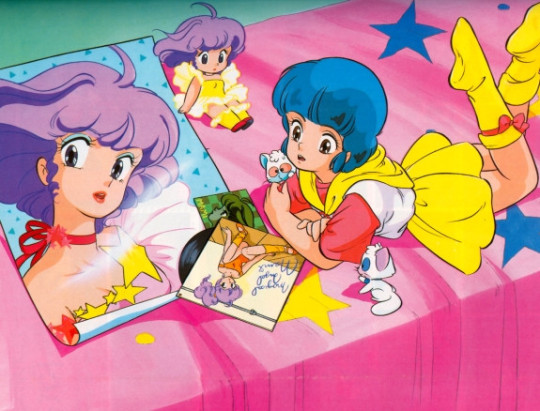
Creamy Mami ran for 52 episodes and several original video animations (OVA), proving quite popular for the new studio. It finished in June 1984, and Studio Pierrot immediately followed up with similar series, each lasting for about a year: Persia the Magic Fairy (Mahou no Yosei Persia), Magical Emi the Magic Star (Mahou no Suta Majikaru Emi), and Pastel Yumi the Magic Idol (Mahou no Aidoru Pasuteru Yumi). Each of these series had the same basic premise—young girl is given some kind of magic power by a magical being and uses it in her otherwise normal life—although surprisingly, despite the success of Mami (and the title of Yumi), none of these later series re-used the premise of the character being a pop idol.
(I hear some of you cry: “That’s it? Four series, each a year long, all from a single production company? That’s what you call a generation?” And it’s true! By the standards I lay out, the second generation of magical girls is extremely small. But I would say that these four series, Mami in particular, are crucial to the history of magical girls. Think of this as a vital transitional period for the subgenre, a relatively brief moment in pop culture that would soon be superseded by newer, more popular works—the equivalent of Archaeopteryx linking dinosaurs and birds, these series bridge the gap between Sally the witch girl and Sailor Moon. Additionally, I’m mostly talking about series and developments in chronological order; while this period in the mid-80s is the birth and peak of the second-generation magical girl, there have been later series that fit this category.)
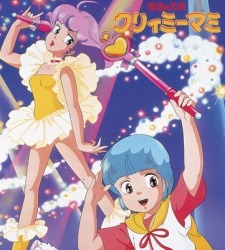
So what are the new elements added by the second-generation magical girl? As I see it, there are two: first, the ordinary girl and the magical girl are two distinct characters which require a visible transformation. As I said in the final paragraph of my first post, while the magical girl has always had to hide her abilities, only starting with this generation does she hide her identity behind another full-fledged persona. The opening credits of Mami show Yu and Mami’s faces spinning around like opposite sides of a coin. Creamy Mami is in fact even more separate than most other examples in the subgenre; not only does she look completely different from Yu, she is specifically described as six years older than her “normal” self. Again, this is the archetype of the pop idol given a fantastic spin; the “celebrity” is a different person from the “person.” (Think, for example, of Hannah Montana!) Connected to this first point, second, an emphasis on costume, pageantry, and physical transformation into a more glamorous self. This is also at least partly due to improvements in animation allowing for more impressive spectacle, but the creators certainly made good use of it. Mami is dynamic and colorful, obviously far more so than its black-and-white precursors. It is also more toyetic than previous magical girl shows, par for the course for a media mix show; Mami uses a magical compact and wand to transform, plastic replicas of which could be bought as accessories, and stuffed animal versions of her fairy companions were available as well. (To be fair, Mami was hardly the only series from this period to be merchandised so heavily.) To what degree the pageantry influenced the desire to make toys, or vice versa, I can’t say, but they certainly go hand in hand from this point on.
There are also elements of this generation that have become staples of magical girl series—the cute sidekicks, the magic trinkets—but I think those are not truly essential, or rather, that what is essential about them is included in my second point above. To put it simply, the second-generation magical girl is surrounded by more stuff—a wand, some talking cats, magical accessories—all of which add to the pageantry (not to mention the merchandise).
There’s another element which I don’t think is necessary for or specific to the second-generation magical girl, but which also deserves a mention: Mami and other shows are aimed at a slightly older audience than Akko-chan or Sally, and the characters are children who often have to navigate adult worlds. Mami is in the music business; the main character in Magical Emi is a young girl who participates in her family’s magic shows. Even in shows where the character is not specifically participating in an adult sphere, they still find themselves in the position of having to act like adults: in her very first episode, Persia tries out her new magic by transforming into a policewoman and tricking her friends. These characters have a child’s perspective on adult problems, and while they can sometimes help the adults in their lives, they are still often flummoxed by the mysteries of the grown-up world. I think this is largely a matter of changing pop-culture expectations, a recognition that older girls—relatively older, that is, pre-teens and teenagers—were watching these shows, and would want to see characters closer to their own age, or at least dealing with similar problems. Again, I don’t think this is a defining feature of this generation of magical girls, but it’s something that will come up in other series and which should be noted.
That covers the second generation of the magical girl subgenre! And boy, are my fingers tired. Join me for the third installment, in which we finally reach the series that would define “magical girl” in both Japan and the rest of the world, and which would leave an indelible stamp on the genre—and anime as a whole—that has lasted to today. You know the one I mean.
#magical girl#magical girl history#mahou shojo#creamy mami#studio pierrot#scsg!#persia the magic fairy#magical emi the magic star#pastel yumi the magic idol
123 notes
·
View notes
Text

Compact Precision: SMD Harmonic Gearbox (SCSG Series)
The SMD Harmonic Reducer, or Strain Wave Gearbox, offers 3.5Nm to 500Nm torque, <20 arc-sec backlash, and ratios of 1:50 to 1:160. Its compact, precise, and rigid design is perfect for multi-axis robotic joints.
#smdgearbox#gearboxmanufacturer#supplier#gearbox#automation#manufacturingindustry#harmonicgearbox#harmonicdrive#harmonicgearboxes#harmonicreducer
0 notes
Text
Harmonic Gearbox Suppliers in Pune | SMD Gearbox

SMD provides both flange and hollow-type harmonic gearboxes which are SCSG and SSHG, along with various input components named 2UJ, 2UH & 2SO. SMD is specialized in manufacturing harmonic gearboxes with ready-to-use motor mountings with input keyways and clamping. In terms of lubrication, these gearboxes come with synthetic grease but for a specific application like for high-temperature requirements, higher-grade grease can be provided. To protect the gearbox from corrosion anti-rust coating is provided. These gearboxes are better for robotic applications due to their short axial length, robust performance and zero backlashes.
0 notes
Text
व्हिडीओ: भारी वजन ७ जणांना उडवले; पाहा मुंबईतील चित्रचंद्राचा धक्कादायक सीसीटीव्ही फुटेज | घाटकोपर विचित्र कार अपघाताचा CCTV व्हिडिओ 7 जखमी scsg 91
व्हिडीओ: भारी वजन ७ जणांना उडवले; पाहा मुंबईतील चित्रचंद्राचा धक्कादायक सीसीटीव्ही फुटेज | घाटकोपर विचित्र कार अपघाताचा CCTV व्हिडिओ 7 जखमी scsg 91
घाटकोपरमध्ये एक विचित्र घडला. एका भरधाव मतदाराने कारने वाहने वेग पकडली. या धक्कादायक घटनेचा घटनाक्रम सीसीमध्ये रेकॉर्ड आहे. या प्रवासात वारसाह्ण वरवर राजावाडी उपचार सुरू आहेत आणि पंतनगर पोलिस अधिक स���्षम आहेत. आश्चर्याची आश्चर्यचकित बाब आर्थिक किंमत नादात हा घडी घडवून आणली आहे. घाटको सुधा पार्क …

View On WordPress
#घाटकोपर कार अपघात#घाटकोपर कार अपघाताचा CCTV व्हिडिओ#घाटकोपर विचित्र कार अपघाताचा सीसीटीव्ही व्हिडिओ
0 notes
Link
0 notes
Text
StarCard Sports Games Launches “Legends” Initiative for New World Football Alliance; Partners with Ashley Cole and Roberto Carlos
StarCard Sports Games Launches “Legends” Initiative for New World Football Alliance; Partners with Ashley Cole and Roberto Carlos
Boston, MA, 26th July, 2022, Chainwire StarCard Sports Games (SCSG), the creator of New World Football Alliance, a play-to-earn football (soccer) video game marrying blockchain with social impact and environmental initiatives, announced today the launch of their Legends platform. This is a series of real-world and in-game partnerships between SCSG and some of the most iconic names in football…

View On WordPress
0 notes